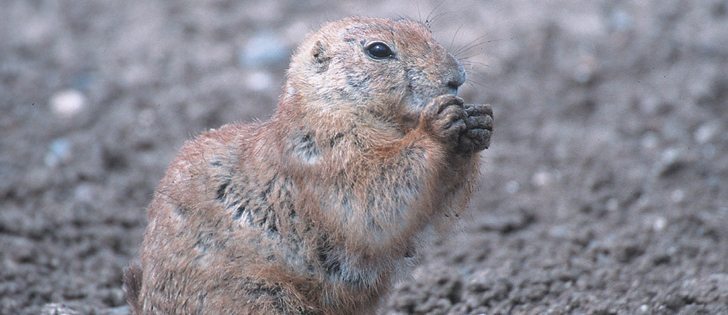Prairie dogs are famous performers, known for a rapid and animated display described by one biologist as the wave.
The exhibition has long been documented by researchers and observed by others, although its precise purpose has remained unclear.
After studying black-tailed prairie dogs, a species with a small population in southern Saskatchewan’s Grasslands National Park, James Hare of the University of Manitoba says the display illustrates an intricate kind of communication.
The jump-yip, as it’s called, is a common sight in black-tailed prairie dog towns.
Read Also

Farming Smarter receives financial boost from Alberta government for potato research
Farming Smarter near Lethbridge got a boost to its research equipment, thanks to the Alberta government’s increase in funding for research associations.
One animal stands on its hind legs and rears back its head, which is then mimicked, one after another, by others nearby. The motion circulates throughout the group like fans in a sports stadium waving their arms.
Hare, a specialist in animal be-haviour, calls it contagious communication. The motion, unique to two kinds of prairie dogs, spreads like a yawn.
It has been proposed that the jump-yip sends a sign to others that the area is free of predators, but in a recently published study, Hare suggests something more.
He said the animals are, in essence, taking attendance, assessing both group size and the need for vigilance. By responding, individual prairie dogs are letting others know they’re alert. A larger display of jump-yips will lead to greater efforts foraging for food.
“Beyond just a mechanism that allows them to optimize that trade-off between forage and vigilance is that in assessing others it tells us effectively that they are able to distinguish between themselves and those other individuals,” said Hare.
“They effectively have evolved to recognize that their perception of the world is distinct from that of other individuals and they are actively probing those other individuals for their perspective.”
Hare has studied other kinds of ground squirrels, including Richardson’s ground squirrels, a known nuisance to agricultural producers for which there are numerous controls, including chemicals. He said his research makes the case for stewardship and conservation.
“We have historically persecuted this species,” said Hare.
“There are people, well educated people, who like nothing more than to run around killing prairie dogs and gophers, as they call them.”
He acknowledged the damage that ground squirrels can do in an agricultural setting, but said the animals can offer benefits on pastureland, including the elimination of invasive species.
“If you exterminate all of the ground squirrels, you’re going to lead to a collapse of natural predator populations and indeed then a major exponential increase in populations of non-target species,” he said.
“Understanding the basic biology of these species, whether we consider them to be pests or not, is of critical importance to managing ecosystems and understanding our place in them. That’s why I think some respect here is critical for the natural landscape.”
Hare’s study can be found in the Proceedings of the Royal Society B: Biological Sciences.

















